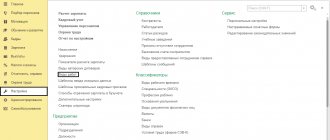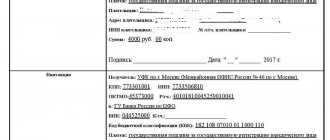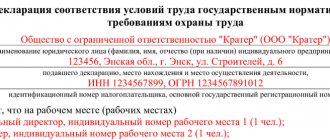State Duma deputies introduced a bill introducing a minimum hourly wage of at least 150 rubles per hour for those who work under fixed-term contracts and part-time. The bill has been discussed in the State Duma since June 2022, and at first this initiative met with bewilderment among other deputies: won’t employers use this tool to pay people less?
Economists say that the new law will “shake up” ossified Russian labor legislation and, on the contrary, will create more jobs. True, the timing for such a reform is poorly chosen: due to the crisis, company management will use this tool to optimize budgets, and people’s incomes will likely fall even further.
Peculiarities
The hourly system of remuneration of workers for work is a type of time-based, and when applying it, several important points should be taken into account:
- Article 91 of the Labor Code gives the concept of time worked. Its accounting is most important when paying hourly, so it is necessary to maintain a time sheet for each employee. This responsibility rests with the employer;
- terms of remuneration is an essential point of the employment contract in accordance with Art. 57 TK. Therefore, an indication of hourly wages is mandatory not only in the contract, but also in the hiring order, additional agreement to the contract and other local acts of the organization;
- It is important to respect workers' rights in any form of remuneration. This is especially true for hourly workers, when Art. 133 of the Labor Code obliges employers, when working out the number of hours per month established by the production calendar, to pay employees wages not lower than the minimum wage. Note that for the minimum wage the maximum working week is 40 hours.
Important! From January 1, 2022, the minimum wage in the Russian Federation is set at 12,130 rubles - find out in your region.
Labor legislation obliges the employer not only to indicate the terms of remuneration in the contract with the employee, but also to promptly notify him if they change, against signature. The notice period is set no later than two months before the change. At the same time, an order is issued for the organization and an additional agreement to the employment contract is drawn up. What should be present in the documents for hourly wages?
The following must be indicated:
- the cost of one hour at the established rate;
- the procedure for calculating wages and the date of their issuance (at least twice a month);
- the procedure for applying the system of bonuses and deductions;
- payment for hours worked on weekends, holidays, and night hours.
The highest paid specialties
According to a social survey and statistical data on wage levels, Russia’s ranking of the highest paid professions includes the following specialties:
- IT specialist. The average salary of a programmer is 60 thousand rubles. Good specialists in this industry receive at least 150 thousand rubles per month.
- Webmaster is a very profitable and in-demand profession. Webmasters receive from 20 thousand to 150 thousand rubles per month for website development.
- Accountant. On average, representatives of accounting activities receive from 60 thousand rubles per month. The chief accountant in Russia receives about 350 thousand rubles per month.
- Dentist. A doctor in Russia with such a specialization can earn from 60 thousand to 200 thousand rubles per month.
- Lawyer. The salary of lawyers and notaries ranges from 30 thousand to 150 thousand rubles per month, depending on the specialist’s work experience. If a lawyer has extensive work experience, then he can count on a salary from 200 thousand to 600 thousand rubles per month.
- Cook. A chef's salary directly depends on work experience and the region where the chef works. In provincial towns, a chef's salary starts from 25 thousand rubles. In large cities, the salary of a cook reaches 150 thousand rubles. Chefs receive from 150 thousand to 200 thousand rubles per month.
- Collector. Due to the huge number of outstanding loans, banking institutions are increasingly turning to collection companies for help. The average monthly salary of a collector can reach 400 thousand rubles per month.
- Auditor. The average salary of an auditor is 200 thousand rubles.
- Financial analyst. The salary for this specialty starts from 66 thousand rubles per month.
One of the highest paid professions in Russia is an oil platform worker engaged in oil and gas production. On average, for one day of work, a person can earn up to $300. But this job is not in great demand, even despite the high earnings due to difficult working conditions.
When is it used?
The system of monetary incentives for hours worked is mainly used when it is quite difficult to standardize the work of employees or an employee. Therefore, a fixed cost per hour and the amount of time actually spent makes it possible to calculate the salary most accurately. This allows the employer to avoid overpayments for the absence of an employee on site for various reasons.
At the same time, such a system is beneficial for those who are employed part-time or part-time.
Salary levels by profession
As previously noted, the level of wages for each specialty directly depends on demand and region. So the average salary of an electric welder is 57 thousand rubles.
In large cities of Russia, managers receive approximately 54 thousand rubles, and directors of enterprises from 55 thousand. A deputy director can count on a salary of 42 thousand rubles and more.
In the construction industry, specialists earn from 40 thousand rubles. An architect's salary is 49 thousand rubles, and an expert receives about 42 thousand rubles. The salary of a painter is 42 thousand rubles, and the salary of a builder-fitter does not exceed 41 thousand rubles. Estimators and installers earn slightly less than their fellow builders. Their salary usually does not exceed 38 thousand rubles.
A trainer in a fitness club receives an average of 40 thousand rubles. The carpenter and inspector also receive 40 thousand rubles each month. A middle manager earns from 37 thousand rubles, and a driver can count on 37 thousand rubles per month.
In the agricultural sector, salaries also cannot be called high. So a tractor driver receives about 35 thousand rubles, and a foreman only 34 thousand rubles a month.
The average salary of an economist is 34 thousand rubles, while a customer service manager and a logistician earn 33 thousand rubles each.
The mechanics' salary is 33 thousand rubles, and the storekeeper receives 31 thousand rubles monthly. A security guard at an enterprise receives no more than 29 thousand rubles.
In the restaurant business, only chefs and management receive good salaries. So a waiter receives approximately 32 thousand rubles a month, and a dishwasher only 28 thousand rubles. If we compare such incomes with salaries in the United States, we can conclude that the salary of a dishwasher in America reaches $9 per hour, while in Russia they pay approximately 300 rubles per hour for the same work. A maid in Russia receives 23 thousand rubles monthly.
Chef at work
A cashier in a store earns from 26 thousand rubles, and an administrator from 27 thousand rubles. Electricians and mechanics receive approximately 26 thousand rubles each. General workers can count on a salary of 16 thousand rubles.
A plumber at a utility company receives no more than 19 thousand rubles, and a car mechanic receives 17 thousand rubles a month.
The average salary of scientists is 20 thousand rubles, and laboratory assistants receive no more than 14 thousand.
Firefighters in the Russian Federation earn an average of 21,800 rubles per month, and psychologists from 24,600 to 35,000 rubles.
A bank employee earns from 16 thousand to 33 thousand rubles per month. The salaries of bank employees directly depend on the specifics of the work.
Surveyors and land surveyors are in great demand in the Republic of Vietnam, so the salary of surveyors starts from 30 thousand rubles. An ordinary geologist earns approximately 45 thousand rubles, and a petroleum geologist can earn up to 60 thousand rubles per month.
Veterinarians in Russia receive approximately 26 thousand rubles. A veterinarian's salary depends on experience. If there is no work experience, then the veterinarian’s salary will be from 20 thousand - 22 thousand rubles.
List of salaries for engineers in Russia:
- Aerospace industry - 42,400.
- Hardware – 38,200.
- Dredging -38,400.
- Energy supply – 30,000.
The average salary of an engineer in Russia is 35 thousand rubles.
Based on what documents is it calculated?
The main document for calculating wages for hourly wages is a time sheet. It is in it that the responsible employee appointed by the employer enters the number of hours that were actually worked by the employee or employees who were hired at work on the condition of such time-based payment.
The time sheets are transferred to the accounting department of the organization, which has information about the cost of one hour of labor time. This data is the basis for calculating salaries.
The formula here is simple: the monthly salary will be the product of the hourly tariff rate and the number of hours worked in the month.
Employment of citizens
In the issue of document registration and employment of citizens, the introduction of a new minimum indicator will not introduce new adjustments. A fixed-term employment contract will be drawn up in a standard manner, in accordance with the rules of the Labor Code.
The only change in the drafting of the agreement will concern the section on payment for activities. From January 1 2022 for citizens employed under a contract of a limited period, the content will need to use the wording “Set an hourly wage for the full name based on the rate “ sum”
at one o'clock. In this case, the value used cannot be less than 150 rubles.
Payroll example
Conditional citizen Petrov A.N. was hired by the organization and signed a fixed-term employment agreement for 2 months. In relation to Petrov A.N., a schedule of 6 hour working days for 15 days per month was established. In the contract, the minimum rate was used in the wage section.
Under these conditions, Petrov A.N.’s earnings will be:
- 6 * 150 = 900 rub. in one shift.
- 900 * 15 = 13 thousand 500 rubles. per month.
- 13,500 * 2 = 27 thousand rubles. for the entire period of validity of the employment contract.
Thus, the introduction of MRES will allow citizens who are hired for a short-term period to receive higher wages.
Calculation of the minimum hourly wage in Russia in 2022
If we talk about the minimum wage for hourly workers, then it is necessary to mention the minimum wage, the amount of which, from January 1, 2022, was equal to the subsistence level in the country. In the future, it is planned to adjust both of these indicators simultaneously.
The “new” minimum wage was adopted in the amount of 12,130 rubles and this is the minimum amount that the employer is obliged to pay to employees who have worked the hourly rate per month. The hourly rate is established by local acts of the organization. On a monthly basis, these numbers can be found in the production calendar.
Hours worked beyond normal, as well as on weekends and holidays, are paid additionally. At the same time, the hourly rate on working days that fall on a weekend or holiday increases by at least twice. The employer may establish other payment conditions on these days, but comply with the rule of applying the minimum coefficient.
To calculate the minimum hourly rate, the maximum number of working hours per month in a particular year is taken. In particular, in 2022 it will be the month of July, where their number will be 184. Then the minimum threshold for the cost of an hour of working time should be:
12130 / 184 = 65.92 rubles.
Example 1. Citizen Kuznetsova works on an hourly basis with a set hourly cost of 100 rubles. According to her report card, she actually worked 112 hours per month, so her salary will be:
100 × 112 = 11,200 rubles.
Example 2. An employee of an organization is paid an hourly wage at a rate of 65 rubles per hour. In April 2022, he worked 167 hours, and was also involved in work on a day off for 3 hours, for which double pay was provided. Then his salary will be accrued for the month:
(167 × 65) + ((3 × 65) × 2) = 11,245 rubles.
Let us clarify that the payment is accrued wages minus personal income tax. At the same time, the minimum wage is the minimum amount not of payment, but of accrual.
Will life get better?
A bill on establishing a minimum hourly wage (MHW) in Russia in the amount of 150 rubles per hour from January 1, 2022 has been submitted to the State Duma for consideration. Now in Russia the hourly rate is calculated based on the minimum wage - 12,130 rubles. It turns out that in May 2020 it was 89.85 rubles, and in July - 65.92 rubles.
This innovation will not affect all workers, but only those who work under fixed-term contracts or work part-time. It is proposed to enshrine MPOT in the Labor Code of the Russian Federation and establish rules for annual indexation.
The authors of the bill were the head of the State Duma Committee on Federal Structure and Local Self-Government Alexey Didenko, the head of the State Duma Committee on Labor, Social Policy and Veterans Affairs Yaroslav Nilov, Deputy Chairman of the State Duma Committee on Information Policy, Information Technologies and Communications Andrey Svintsov, State Duma Vice Speaker Igor Lebedev and Senator Sergei Leonov.
In 2014, deputies already submitted such a bill to the State Duma, proposing to introduce an hourly wage of at least 100 rubles, but the Ministry of Labor did not support it.
The authors of the initiative believe that the bill will increase the incomes of Russians in the context of the spread of coronavirus.
USUE Associate Professor Svetlana Orekhova notes: there are no guarantees that this measure will lead to an increase in wages in general and, consequently, to an increase in the well-being and consumption of citizens.
“Where highly skilled labor is required, employers already pay increased remuneration to workers. In other cases, employers can simply switch to piece-rate forms of remuneration,” the expert believes.
Svetlana Orekhova listed the advantages of hourly wages as convenience for the employer (the company does not have to overpay for extra time), a flexible schedule for the employee, and the ability to accurately measure his labor productivity. In addition, at full employment, wages will be several times higher than the subsistence level, which is significant for Russian regions.
NES Vice-Rector Maxim Buev noted that the introduction of MPOT will make the labor market more flexible and increase job prospects for Russians, as happened in the West.
“The introduction of MPOT will play a big role in bringing low-paid jobs, which often do not take up full-time work, out of the shadows. Here it is good for the state - the employer pays taxes, and for the employee - since employment in the white sector is more stable and provides the opportunity to protect their rights. Theoretically, the introduction of MPOT could encourage employers to create jobs in the formal sector for “short-term” work, which will make the labor market better,” the expert told a Polit.ru correspondent.
In the United States, the hourly minimum wage was introduced after lengthy debate in 1938 with the passage of the Fair Labor Standards Act. For the period 1938–2020 it increased from 25 cents to $7.25 an hour. Each increase in the level of MPOT was accompanied by political debates, which did not always end in favor of the initiators of the increase. For example, President Barack Obama's proposal in October 2014 to raise wages to $10.10 per hour drew significant opposition from Republicans. They referred, in particular, to the fact that experts did not find a significant relationship between increasing the minimum wage and reducing poverty.
The head of the Department of Corporate Finance and Corporate Management of the Financial University under the Government of the Russian Federation, Konstantin Ordov, is also convinced that the purpose of introducing MPOT is not to increase the income of the population, but to find a balance between the duration of work and its payment.
“Within the framework of the minimum wage paradigm, calculated per month, we are unable to break the vicious circle between low wages and high employment,” the expert noted in a conversation with Polit.ru. “We are in a trap when the state’s interest in increasing employment dictates the need to create a large number of low-paid jobs. Perhaps introducing MPOT will help overcome this.”
It is possible that the introduction of MPOT will help increase labor productivity in Russia, which remains several times lower than in developed countries, believes Konstantin Ordov.
In terms of labor productivity, Russia is inferior to all countries of the Organization for Economic Co-operation and Development (OECD), with the exception of Mexico.
“The low standard of living and wages of Russians is due to the fact that our work is ineffective. Low labor productivity is our scourge, the result of government policy in the field of preserving jobs at any cost. The introduction of MPOT will give greater flexibility in the organization of modern forms of work and will give people freedom - the opportunity to try themselves in part-time work. The need to be a hostage to labor relations will disappear,” the expert added.
Pros and cons of hourly wages
Like any system of payment to employees, the hourly system has both advantages and disadvantages. We will try to list them as completely as possible.
Pros:
- This is an effective mechanism for monitoring and paying for work time, when within the limits of working hours or performance of official duties, temporary intervals of breaks for any cases are excluded. This system is especially convenient for shift work schedules;
- protection from the use of irregular working hours, when such a situation is stipulated in the employment contract with employees on the salary system. Hourly workers will be paid for any overtime outside of working hours;
- the possibility of using a flexible working mode in the organization as a whole or for a number of specialists. This will allow employees to carry out their work activities as efficiently as possible with maximum comfort for themselves, while the employer will pay only for the period of time during which they were at the workplace and performed work functions.
Minuses:
- the difficulty of recording the time spent by each employee. These functions are assigned to responsible employees, but it is possible to use automated systems. They are quite expensive, but they allow you to take into account the time spent at the workplace of each employee. The information is read from the magnetic card and transmitted automatically to the server, where it is accumulated and allows you to accurately determine the hours that the employee spent at the place of work;
- Hourly wages are difficult to establish in areas of activity that do not require a person to be in a strictly defined location. Therefore, it is not always possible to determine the exact number of hours worked;
- keeping employees within strict limits set by the employer when paying for hours worked can negatively affect psychological comfort. As a result, overall labor efficiency may decrease. However, this factor can be smoothed out by creating a certain climate and bonus systems. This will increase employee motivation.
Expenses
All calculations here are just examples; conditions may vary greatly by region and type of activity. I give calculations for a micro-enterprise similar to us. We are 15 people, we develop electronics, embedded software and automated functional testing systems. Simplified taxation system “income minus expenses”, St. Petersburg. All calculations for an employee with a salary of 100,000 rubles.
Salary and taxes
In Russia, taxes and contributions for employees are paid by the employer. Because of this, employees often have no idea how much money is going to the government. Everyone knows about personal income tax 13%. It is as if the employee pays this tax, and the employer acts as a tax agent, withholding this money until salary is paid. That is why the salary in the employment contract differs from the amount received in person. The remaining contributions (30.2%) are paid by the employer. Quite recently, there was a change in tariffs; they became almost half as much for “small and medium-sized enterprises” (SMEs). But happiness will not last long - until the end of 2022. So I will give both options.
Income tax of 13,000 rubles is deducted from the salary amount, the employee receives only 87,000 rubles. Contributions of 30,200₽ are accrued above the salary.
If you count the salary received in person (RUB 87,000), the state takes about 50% (RUB 43,200) from companies in excess of what employees receive. For the coming year, fees for SMEs will be reduced to 35% (RUB 30,009).
There are many nuances that I will omit for simplicity. For example, after “exceeding the base limit,” contributions become smaller.








